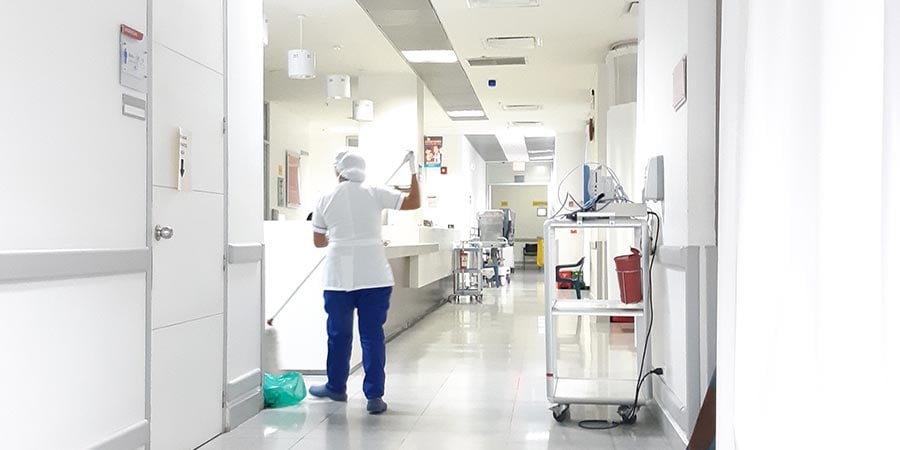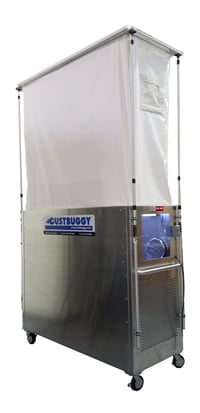Share this
Efficiency Recommendations for Health Facilities Management
by HEPACART on Nov 25, 2021
Explore six essential functions and tools that will increase efficiency, safety, and patient well-being.
A health facility manager's seemingly endless responsibilities are far too numerous to cover, so we boiled it down to a half-dozen tasks along with some tools, techniques, and equipment that you'll find useful in your efforts.
Before we get to the list of six, here are a few general facilities management responsibilities to keep in mind:
- Ensure that all facility assets, from equipment to plumbing to HVAC systems, are reliable and functional.
- Recommend staffing, service, and equipment levels to meet productivity metrics.
- Ensure physical infrastructure safety, including fire safety and building security.
- Provide regular financial and operational updates to facility shareholders.
Facility managers' responsibilities are varied and demanding, and the best in the field display competence in many areas: finance, administration, compliance, planning, design, construction, maintenance, and operations. While juggling disparate duties, a good health facilities manager maintains a steady focus on perhaps the most important thing of all: providing the best possible environment of care for patients and staff.
With that disclaimer behind us, here are the six essential functions of health facilities management along with some tools to increase efficiency, safety, and patient well-being.
1. Maintain Compliance and Certification
Keeping track of and updating certification and building compliance with laws such as the Americans with Disabilities Act is an important responsibility of the health facilities manager.
The Joint Commission (TJC) lists numerous accreditation programs for organizations, such as:
- Assisted Living Community Accreditation
- Behavioral Health Care Accreditation
- Hospital Accreditation
- Laboratory Services Accreditation
- Office-Based Surgery Accreditation
In addition to accreditation programs, TJC also has certification programs for individuals. Here are just a few examples:
- Cardiac Certifications
- Certification for Palliative Care
- Behavioral Health Home Certification
- Health Care Staffing Services Certification
- Patient Blood Management Certification
- Perinatal Care Certification
As with many of our six essential functions, good facility management software (FMS) can facilitate keeping track of certifications and accreditations.

2. Manage Vendors
Many products and services flow through a healthcare facility that here too, FMS is a practical necessity. To help you optimize vendor management, rather than sifting through spreadsheets and stacks of paper, make it routine to enter vendor data into the FMS. It can then help you track contacts, service contracts, and warranties, providing reminders to keep all that important stuff on track. It's just good management to make sure vendors fulfill their contracts and honor warranties.
Another way FMS can help is in price negotiations. Vendor pricing agreements can help healthcare facilities save money, whether by up-front savings or by negotiating the total cost of ownership by getting the vendor to agree to a cap on maintenance and repair costs over the life of the equipment.
3. Purchase, Install, & Track Assets
You probably already know that while you are required to do your best to track equipment, your efforts will not result in perfection. Once again, let's look to facility management software for help to keep shrinkage down to manageable levels. With FMS, you'll have an accessible record of purchase dates, serial and model numbers, condition, and other descriptive data. Electronic tagging can help track equipment and tools without performing manual inventories. A good FMS can also help you know when to replace rather than repair.
4. Implement Preventive Maintenance Practices
Preventive maintenance is all about avoiding unexpected breakdowns. When you track equipment age, condition, and hours of use, you can schedule maintenance that provides benefits like these:
- Reduced equipment downtime.
- Reduced costs for repair.
- Extended equipment life.
- More efficient use of maintenance worker hours.
If your preventive maintenance project involves accessing the space above ceiling tiles, you'll need to employ dust mitigation measures. The best way to do so efficiently is to use state-of-the-art equipment designed specifically for the job. See HEPACART and DUSTBUGGY under "Oversee Construction Projects'' below.

5. Ensure Safety and Security
In healthcare, managing the security of people, assets, and data is a significant challenge:
- People: In a hospital, clinic, nursing home, or long-term care facility, you must strike a balance between caring for a patient population unable to care for themselves and maintaining openness to family and friends. It starts with training staff to understand security measures so that they can guide visitors without making them feel restricted.
- Access control: Staff entrances should have access control measures that limit exit and entry, using employee ID tags. That's much more secure than allowing multiple clinic employees to use the same code to disable an alarm. Access control applies to cars, too. Installing automated gates on parking lots has been shown to reduce car thefts by providing one more barrier that's as much psychological as physical.
- Mass notification: When you must notify absolutely everyone in the facility of an emergency, there are several ways to get it done. One is via alarm systems that are programmable for non-fire events. Probably the most important channel to use is cellular phones, followed closely by whatever radio frequencies your local law enforcement agencies use. So it's vital to locate dead spots and install repeaters, such as in basements and shielded areas.
- Cybersecurity: This is a modern-day concern to all organizations, including healthcare. Over a third of healthcare organizations were hit by ransomware attacks in 2020, according to a recent report. Attackers were successful in encrypting healthcare data 65% of the time, and the average payment to them was about $131,000. The obvious lesson here is to beef up your understaffed IT team and give them the resources they need to eliminate your facility's vulnerabilities.
6. Oversee Construction Projects
Now we get to HEPACART's happy place, which is keeping building occupants safe from dust, debris, and airborne pathogens, whether it's ceiling work or a major hospital renovation.

If your project involves repeated drop ceiling access (e.g., pulling new data cable through the ceiling or checking the health of fire alarms), you'll save many worker hours, reduce waste, and improve safety with HEPACART® or DUSTBUGGY® dust containment carts. Engineered and constructed by healthcare contractors for healthcare contractors, our HEPACART Classic and HEPACART® Auto Lift Mobile Containment feature an embedded HEPAFORCE® AIR Negative Air Machine & Scrubber, making them ideal for patient care facilities.
However, if you are planning a major construction project, you'll want to consider purchasing all members of our dust-busting triumvirate: AnteRoom, AIR Negative Air Machine, and STARC Systems reusable wall barriers.
Conclusion
To sum up, our advice has been mostly about getting the right software (FMS) and the right hardware (the HEPACART equipment described above) that will make a half dozen essential functions more efficient. We hope it’s been helpful.
To learn more about HEPACART products, read 4 Must-Have Dust Containment Tools for Healthcare.
More reading:
- Healthcare Facility Safety: Plan Big, Think Small
- 4 Dust Containment Tools that Every Healthcare Facility Manager Needs
- How to Maintain Clean Air During Healthcare Construction
- Pair HVAC & Humidification to Keep Air Clean In Healthcare Facilities During Winter
- Explore Dust Containment Tools
- More Facility Management Articles

